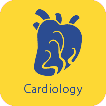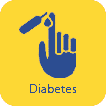How common is celiac disease? Is celiac disease the same as wheat allergies?
More than 2 million people in the United States have celiac disease, or about 1 in 133 people. Wheat allergies are more common than celiac disease and usually affect young children, who often outgrow the allergy. In general, food allergies (which can include sensitivity to one or more of the following: wheat, soy, tree nuts, peanuts, dairy, egg, fish or shellfish) affect approximately five percent of children under the age of five and about four percent of people over age five.
Wheat allergy is sometimes confused with celiac disease but the conditions are different. Wheat allergies lead quickly, in a few minutes to a few hours of consuming wheat, to common allergy symptoms such as swelling in the tongue or throat, hives, itchy skin or eyes, gastrointestinal discomfort, labored breathing and anaphylaxis. Celiac disease does not cause allergy symptoms but causes a different abnormal reaction to wheat, leading to damage of the small intestine. However, it is possible to have both celiac disease and wheat allergy.










